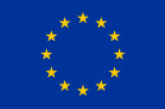International projects expand our thinking. Working with people from other contexts helps us to find new ideas for our work and opens our eyes to the good things in our own country. Learning is most effective when you can talk with others, ask clarifying questions, and come back with your thoughts to somebody after pondering things a bit by yourself. This way we can elaborate sustainability education further and facilitate situations, where students learn to minimize their carbon dioxide emissions.
Traveling to meet the project partners creates a dilemma, though. Flying warms the climate effectively. We had a project meeting in Romania, and my return flight from Helsinki, Finland to Bucharest (3730 km) would create, according to Finnair, about 500 kg of CO₂ emissions. Other pollutants contribute to warming the climate alongside CO₂. If they are included, the amount could be even 1300 kg of CO₂e emissions per return flight, which is over half of the emissions that I should produce per year when living within the limits of under 1.5-degree global warming. During this year, I should also eat, warm the house, and buy some necessary things for living, which all create emissions. In addition to that, my personal history is black when it comes to flying. I feel I have used my lifetime share of emissions already years ago.
Alternatives to flying
I had two options: not to travel at all or to travel by land. Either of the alternatives is perfect. I could have joined the meetings by remote connection – but I would have missed all the unofficial discussions that could improve both my thinking and the activities I am working with. So, I decided to travel without flying. This decision increased my traveling days to the destination and back from two to six. I am privileged to have the opportunity to invest so many days sitting in trains and on the ferry: my children are already adults, and I have work that I can do anywhere on my laptop.
My journey began from Tampere, Finland, on a Sunday afternoon. I traveled by train to Turku harbor. A night ferry took me to Stockholm, where I hopped to work on a morning train first to Copenhagen and from there to Hamburg, where I arrived in the evening. I slept the night from Monday to Tuesday in a hotel near the railway station and continued early in the morning by train to Budapest. After the whole day working on the train, I changed to a night train to Bucharest. The last train trip was the longest: after about sixteen hours of traveling I arrived in Bucharest on Wednesday afternoon.
Impact of my journey
The whole return trip by train produced less than 12 kg and the ferry about 55 kg of CO₂. The calculations are not exact, though, and the numbers used in different calculations vary. In addition to this, I bought a big battery to be able to work the whole day on the train (which proved to be a necessary purchase), and the production of the battery has produced half a kg CO₂ emissions and other kinds of environmental impact. Also, the night in the hotel produced about 14 kg of CO₂. Even if counting all of these together, the emissions of flying are much more than by not flying.

I like working on trains: the beautiful changing landscapes make my brain work better. An extra fortune is that I have an already retired husband who wants to travel with me. It would have been hard to worry about my luggage while going to the toilet, traveling with strangers on night trains, and being afraid alone if the train was on time. I have some other tips for traveling by train, too. It is good to have enough time for train changes – we had, but one time we just and just managed to get the next train. We also had holidays after the project meeting, so traveling back was more convenient with shorter journeys per day.
I fully understand that this kind of traveling is not an option for everybody. Meetings are important. Considering the options and choosing some other way, when feasible, can significantly cut the emissions for work and leisure travel.
Niina Mykrä, University of Jyväskylä, Finland







